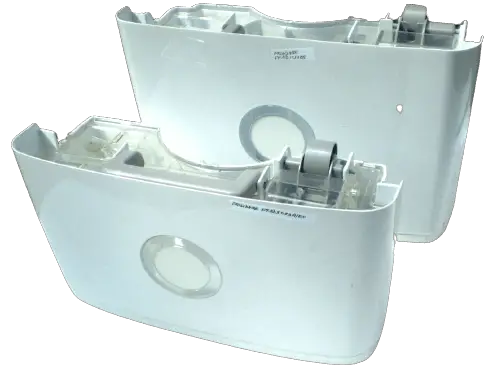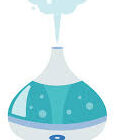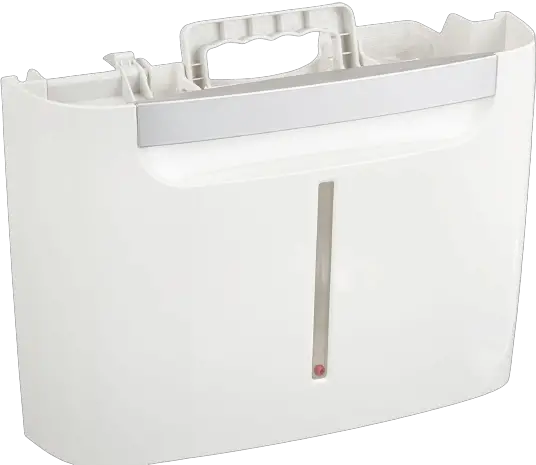How Do You Stop Mold in a Dehumidifier Tank?
Knowing how to prevent mold in a dehumidifier bucket can save your family from mold toxicity symptoms.
Mostly, mold growth is associated with humidifiers, but any home appliance that uses water can support this fungus growth, including a dehumidifier.
In another article, we covered how to clean a dehumidifier bucket. If you leave the bucket with water too long, mold could start growing. Mostly, when people speak of dehumidifier pink slime, it is the mold in the dehumidifier bucket.
Ignoring this mold can be the start of many mold colonies in your home. The dehumidifier can prevent the spread of mold spores in your home, but if left uncleaned and neglected, it can also spread the same.
So, how can you prevent mold? Follow the tips below:
1. Check the dehumidifier bucket regularly

Okay, perhaps you have a basement dehumidifier with a drain hose. Do you still need to check the dehumidifier bucket?
Yes, please. Also, check the bucket, even when you are using a dehumidifier with pump. Not only do you need to empty the dehumidifier reservoir, but you also need to clean it.
If it has some moisture, mold can start growing in it. This is why you need to keep an eye on it. If you are not using a drain hose to drain the water out, you should check the bucket more frequently.
If you neglect cleaning the reservoir, the scale will start forming on the walls. This can encourage the growth of mold.
To clean the dehumidifier bucket, do the following:
- Switch off the dehumidifier and unplug it from the wall
- You can give the unit time to cool down or just get into the cleaning
- Remove the dehumidifier bucket; the instructions are in the user manual of your Midea dehumidifier or any other
- Empty the water
- To descale the bucket, add water and a cup or two of white vinegar
- Give it time to soak through, and then pour it out
- Clean the bucket with a soft brush, add water, and then rinse it
2. Clean the dehumidifier filters
If your dehumidifier keeps going off after a few minutes, it could be a problem with the filters. They need to be changed in due time, and before the change, they need cleaning.
The dehumidifier filters trap different types of pollutants, and one of them is mold spores. Since these things lodge themselves on the filters, they make the perfect habitat for bacteria and mold to grow.
If you use the dehumidifier to control humidity in your room daily, clean the filters at least once a month. That should ensure that the filters are clear and allow air to pass through easily.
When the time is up, you should change the filters so that the unit can continue working properly. If the dehumidifier is blowing cold air, it means something is wrong, and you can start with the simplest checks, such as the filters.
3. Clean the hot and cold dehumidifier coils
While you are cleaning the filters, also check the exterior condition of the unit. For instance, you can clean the dehumidifier coils.
Mold grows on the coils easily, and it can spread to the rest of the house. This is possible when you have to use the dehumidifier in the basement. If you live in a place in highly humid Florida, mold can grow easily on the coils because of the constant humidity.
To lower the risk of mold growth, you need to keep the dehumidifier as clean as possible. If the coils already have black mold on them, you should clean them with white vinegar to kill the mold. If they don’t have mold, you can wipe them with a damp piece of cloth.
Generally, always clean the dehumidifier in its entirety, both outside and inside. It is going to help you in a big way.
Keeping the coils clean will help the unit work properly. You will know everything is okay when the dehumidifier blows warm air.
4. Check the interior parts of the dehumidifier
Make a habit of opening the back cover of the dehumidifier and checking the interior parts. As long as there is moisture, different types of mold can grow easily.
To prevent this, check the compressor and other parts. You can even deodorize them by wiping them with a piece of cloth dipped in white vinegar.
Remember to clean the covers too. They, too, can hold mold spores, waiting until the conditions are right to start a mold colony.
Always stay on top of the condition of the unit. If you smell a musty smell around the dehumidifier, it could be coming from a fungus. Mold causes a musty smell in the house.
5. Descale the dehumidifier with water and vinegar
This is a good option for a dehumidifier that has a drain hose and pump. To descale the dehumidifier, you should add water and vinegar to the bucket and then switch on the dehumidifier. Vinegar helps with mold, by killing it.
Let it pump out the water so that the white vinegar can descale every part or tube that it comes into contact with.
Keep the dehumidifier running properly for some time. If you can change the speed of dehumidification, keep it running on high.
By the time the unit has pumped all the water outside, it will have descaled properly. You should do this often, say at least once every two months.
Even if you do not suspect the presence of mold in your dehumidifier, you should still use this method to prevent the growth of mold in the internal parts of the unit, such as the pump and the tubes.
6. Remove mold from your home
As you prevent mold formation in your dehumidifier, also consider removing mold from your home. If you live in a place with high humidity such as Seattle, check your home for mold from time to time.
If no mold spores are floating in the air, it will be hard for mold colonies to thrive. Best yet, ensure that you keep the humidity low. If you can keep it below 50 percent all the time, mold will not grow.
However, even when keeping the humidity low, the dehumidifier will be in constant contact with water. Therefore, mold can grow there easily. Check it and sanitize it with the methods we have outlined here.
Check for mold in the humidifier symptoms, if you have one. This appliance is in constant contact with water, so it can grow mold in the tank easily.
Wrapping it up
It is easy to prevent mold in a dehumidifier by following the tips we have shared here. Remember, using a dehumidifier prevents the escalation of humidity. Too high humidity inside is not good. It exposes your family to the dangers of mold.
Living with this fungus in your home causes mold exposure symptoms in your children, and these can be dangerous.
Clean the dehumidifier, especially the bucket and the coils. Do this as both a preventive and a remedial measure.

